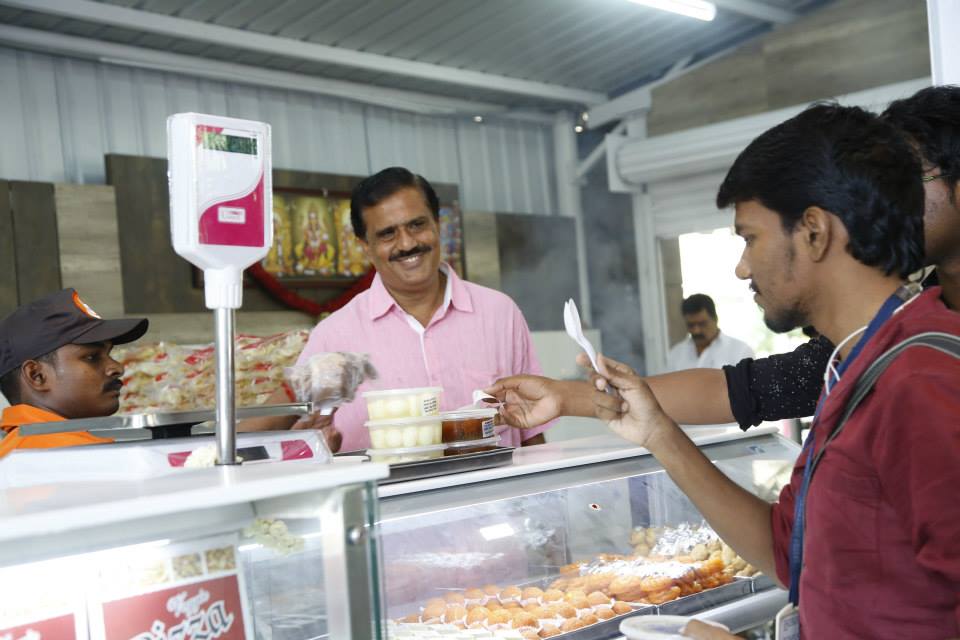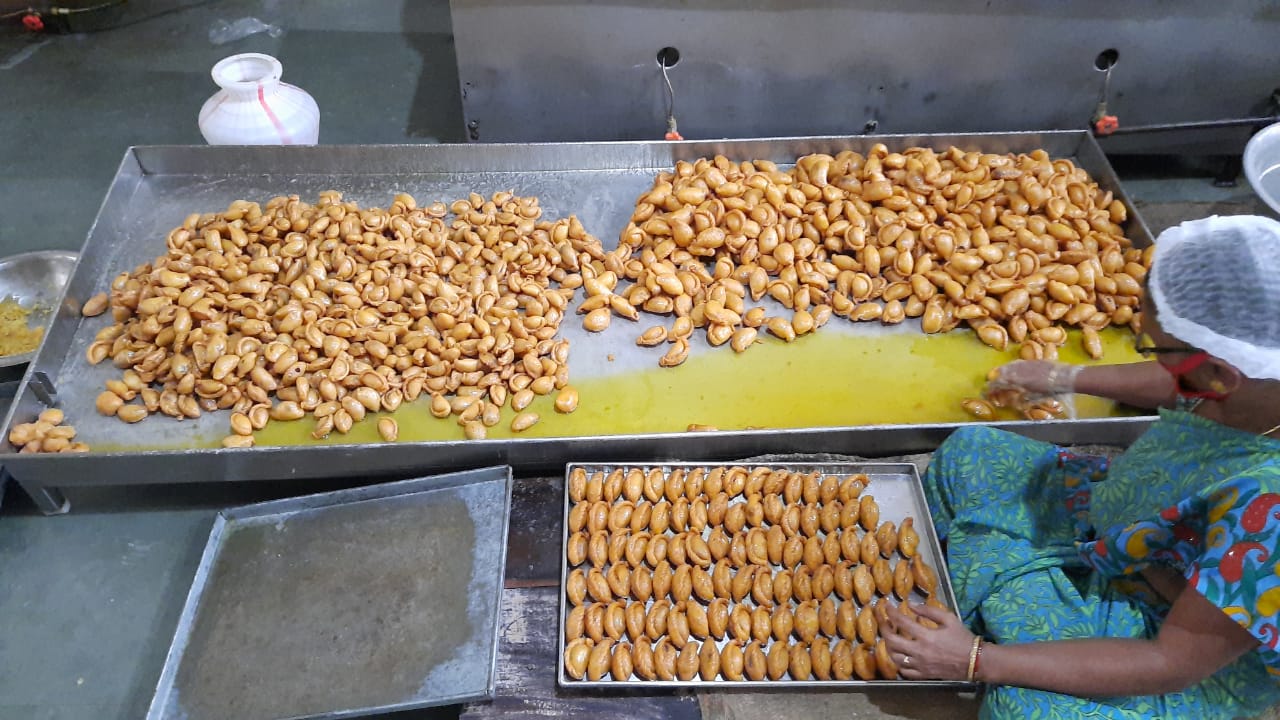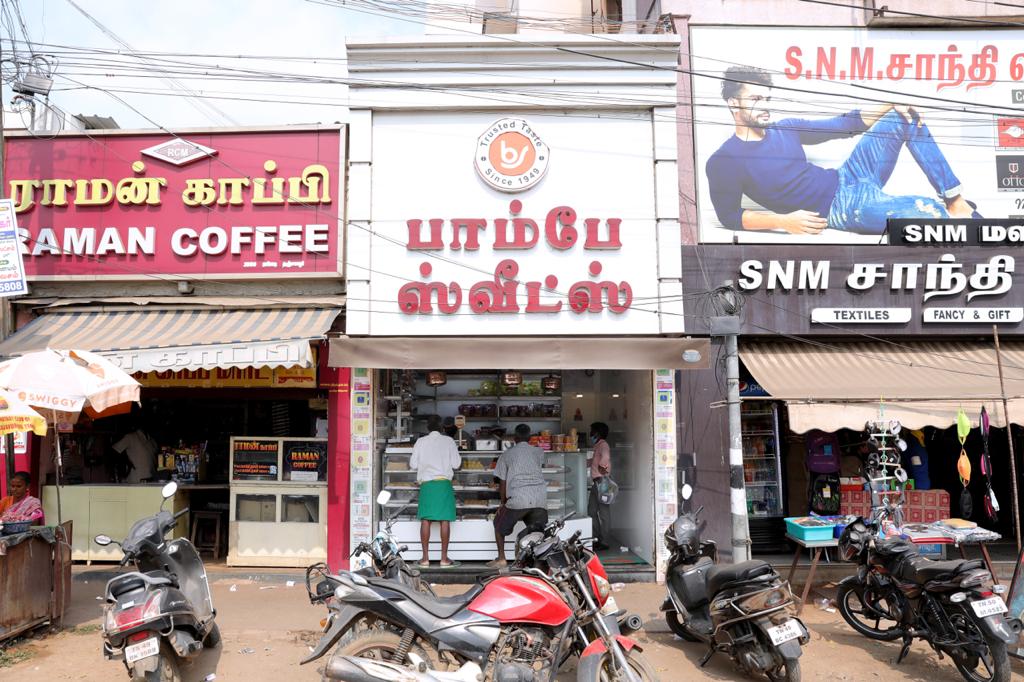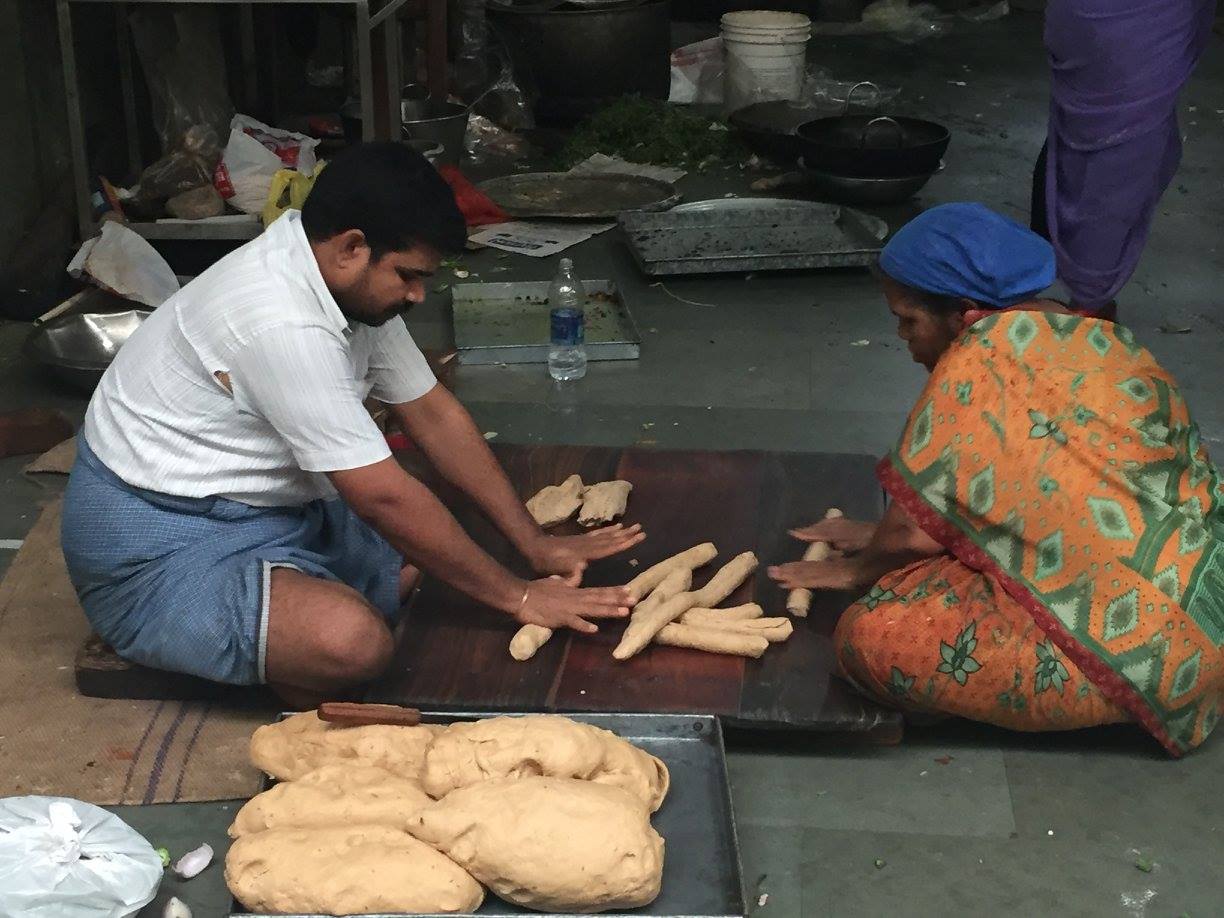Gujiyas, also known as chandrakala, are not just a Holi special, but a year-round affair in Bombay Sweets, an iconic eatery in Thanjavur, a city brimming with great living Chola Temples. Like the charm of the ancient temples, the eatery, opened in 1949, also emanates a sense of nostalgia.
Not much has changed in the last 70 years in terms of the sensory experience of the sight, caramelised taste, and smell of the crispy chandrakala. The crescent-shaped sweet is essentially a sweet, deep-fried dumpling made from maida and stuffed with a mixture of sweetened khoya and dry fruits.
The only thing that has changed about Bombay Sweets over the years is the size of the shop — from a small 10×10 feet room to now a 16,000 square-foot swanky store. The eatery, with its 14 branches, has cemented its place on the taste buds and in the hearts of many over the years.

It is often assumed that iconic eateries specialising in regional cuisines have founders whose ancestors have lived in the place for aeons. However, the founder of Bombay Sweets, Guru Dayal Sharma has a different beginning. A traditional sweet maker, he was originally from the sacred land of Mathura, Uttar Pradesh who moved to the south in the 1940s for work.
“My father worked in a Chennai restaurant for a brief period before making Thanjavur his home,” BG Subramani Sharma, Guru Dayal’s son and managing director of Bombay Sweets tells The Better India. “He saw a stark contrast in the culture, especially the food, in Chennai. So he became acquainted with the region that wore munds and ate idlis for breakfast before opening his own shop in Thanjavur. He took on the challenge of making his eatery a popular one. He planted the roots and today, all of us, including customers, are reaping the fruits.”

According to Sharma, Bombay sweets get an average of 4,000 combined customers every day, who make a purchase from among 200 different types of sweets and seven savoury snacks. These include Ghee Mysore Pak, Ajmer Cake, Mini Badusha, Carrot Mysore Pak, Beetroot Mysore Pak, Kaju Jalebi, Kesar Laddu, Coconut Murukku, Badam Lachha Mixture, Pepper Kara Boondi, and Curd Sidai, among a host of other snacks.

However, the best-selling sweets are chandrakala and suryakala (full round gujiya). Even during the COVID-19 pandemic-induced lockdown, they were selling over 200 kilos of chandrakala every day, a feat that in itself is impressive.
So what makes the two sweet dishes, which are exported across the world to countries such as the United States, Canada and Singapore, so irresistible and mouth-watering?
Sharma gives The Better India a sneak peek inside the kitchen of Bombay Sweets, from where the scents of ghee and sugar perpetually waft, and culinary magic awakens as the world sleeps.
The twist that makes Bombay Sweets popular

At a meagre price, Guru Dayal purchased a small room opposite the Thanjavur railway station in 1949, and named it Bombay Sweets, so people could easily resonate with the name. He introduced gujiyas, which is typically a north Indian dish, with a south Indian twist. He increased the sugar content by dipping the dry snack in hot sugar syrup.

The pastries, which are famously served during Chapan Bhog in Mathura, are filled with khoya and nuts, and peppered with saffron and cardamom powder before they are dipped in sugar syrup. Preparing chandrakala is a task that requires much skill, for any delayed step, an incorrect folding, or uncooked filling changes the entire outcome of a near-perfect dish, says Sharma, whose days are incomplete if he does not spend at least an hour inside the kitchen.
The staff uses paddle mixtures to knead the dough, which is then cut into equal-sized balls for rolling. It is a clockwork process — roll, fill and fold. The edges are delicately hand-folded in a ridge-like pattern. The gujiyas are then fried in a humongous pan on a medium flame. In the final step, they are coated with syrup.

For others, this may be just a process, but for Sharma, it has always been a well-guarded house ritual that he has dutifully participated in since he was a child. “I would wake up early and assist my father before heading to school. I would help him with basic things, such as pinching the dough and keeping the ingredients ready. I was called ‘Maida Maavu’ in school, as I smelled of flour. As I grew, I learned how to neatly seal the ends. I would be mesmerised by my father’s skills. He was a one-of-a-kind artist,” he says.
A generational tradition

The Sharmas may not have a lineage to fall back on, but they are surely working towards carrying forward their culinary legacy. For that, Sharma says there is only one secret recipe that he has inherited from his father, which he recently passed on to his wife and two daughters.
“The secret lies in the pure and authentic recipe of my father, who never compromised on the quality. No matter what the rates of ingredients like milk or sugar are, or how many orders we get during the peak seasons, the mantra is to refrain from selling items that are not made properly. I remember, in my early days, when we had opened the second store, I proposed that we make the dough in advance. My father was very furious and made me understand what difference a fresh dough can make. He also had a very strict policy observed by each member vis-a-vis hygiene,” says Sharma.
Another quality that Sharma has imbibed from his hardworking father is to be present in the kitchen on special occasions including festivals. Like his father, Sharma never sits on the cashier, and instead spends time inside the kitchen listening to music and helping the staff.
It’s probably these qualities of being highly involved in every step that makes the store stand out despite the stiff competition, “The formula is simple — remember and adhere to the ideology of your venture, while constantly innovating,” adds Sharma.
Follow Bombay Sweets here
Edited by Divya Sethu
No comments:
Post a Comment